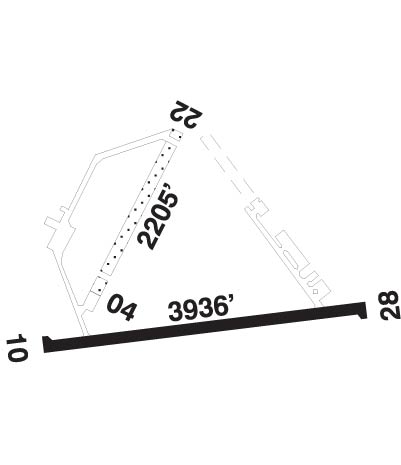See, at my home airport, there is a "big" runway (5000+ feet) which is
used by twins and trainers that approach much too fast, flare too high,
and land long. That's ok, they're just learning.
Then there is the "short" runway (2699 feet) which is narrow and sometimes
is totally idle, because often everyone will only use the "big" runway for taking
off and landing.
If you choose the correct runway, it can save you 10 or 15 minutes of waiting
before takeoff. Sort of like looking at Google Maps for the red traffic before
you go someplace in your car.
Well, there was traffic on the "short" runway, which was a bummer. I mean,
they're allowed to use it, but it's kind of nice to have it for myself.
Just watching, there was a 182 going around the pattern. He too was approaching
much too fast. You could see it on short final - the nose was tucked down,
and he liked to flare to a perfect three-point landing, planting the nosewheel
at the same time as the mains.
Remember, if you're buying a 182, check for wrinkles in the firewall, and missing
rivets in the nose gear, from people landing like that.
A Maule appears on final. Wonderful. A taildragger, sure to ace the landing.
Well, not so much. He too came in fast, got a PIO going in pitch in the flare,
landed long, didn't have room to take off, so he back-tracked on the parallel
taxiway, and took off, violently pitching the tail up for maximum yaw.
Sigh.
Strap in, start up, call ground and I choose the short runway. I needed a few
minutes anyways to idle after the runup had put some heat into the cylinder
heads, to warm the W100 oil up. I start aircraft piston engines very simply -
low RPM at first, lean the mixture, wait for 200F on the CHT before runup
to avoid scuffing the pistons, then if I'm running multi-grade I don't need to
worry about the oil temp, but if I'm running straight-grade I do need to get
the oil temp up before takeoff. It's funny that so few pilots know the oil
they are running, but it sure changes your ops.
Off I go. It's winter, so it's hazy with an overcast. People here shit a brick
about that, but where I come from 6sm vis is a good day.
For my landing, short runway. My aircraft is 120 mph base, 110 wings level on
final, 100 mph over the threshold for a normal approach and landing. It's worked
well for me, for the last 25 years that I've been flying this type. For the short
runway, I slow it down to 85 mph short final, stall warning horn honks over
the runway threshold, power to idle, flare and land and make the Quebec
turnoff, which is half the runway or 1300 feet. I like to land tailwheel first,
then the mains come down. AOA decreases and I'm done flying. BD Maule
called it the "double whomp" landing, and the S-2B manual recommends it,
so of course no one does it.
Dumb question. For decades, I've been shit on that I'm a terrible pilot by my
fans at TC. I accept and embrace that rhetoric. But if that's the case, why
is the shittiest pilot in Canada effortlessly landing on half of the "short'
runway, that the light trainers struggle with?
Maybe it's just me, but when I watch people land, they sure look like student
pilots, just learning to fly. They can't all be, though. Some of them must be
at least PPL's.
Nobody slows down on final any more. When I was CFI at Westair at Carp in
the 90's, when we were using runway 10 I liked to land the 172 and make the
first turnoff on the left, which was around 400 feet. Fun to startle the guy
waiting, who expected you to sail down to the other end.

Would be nice to see at least one of the TC Golden Arms do that.



